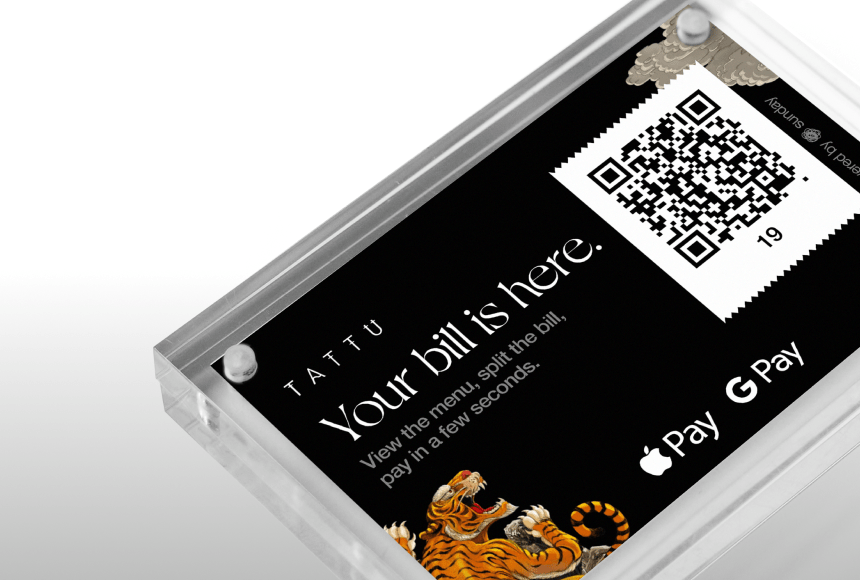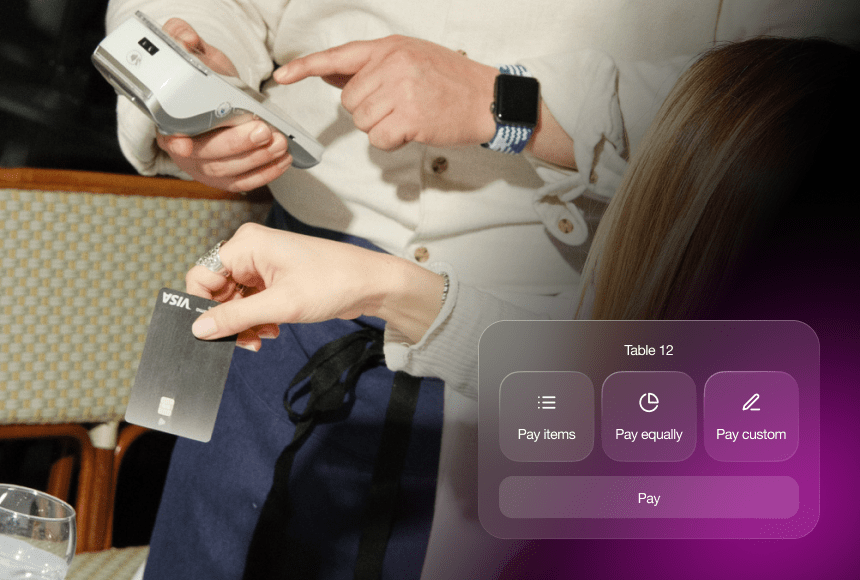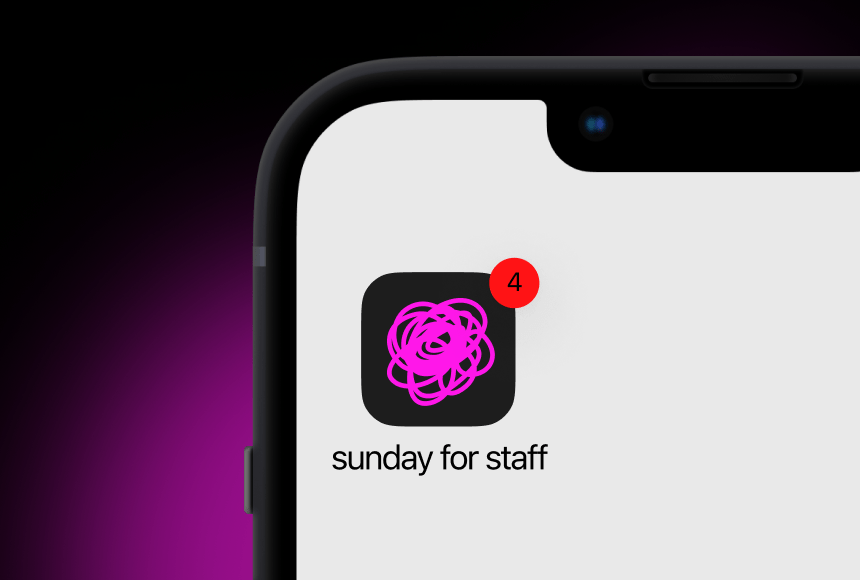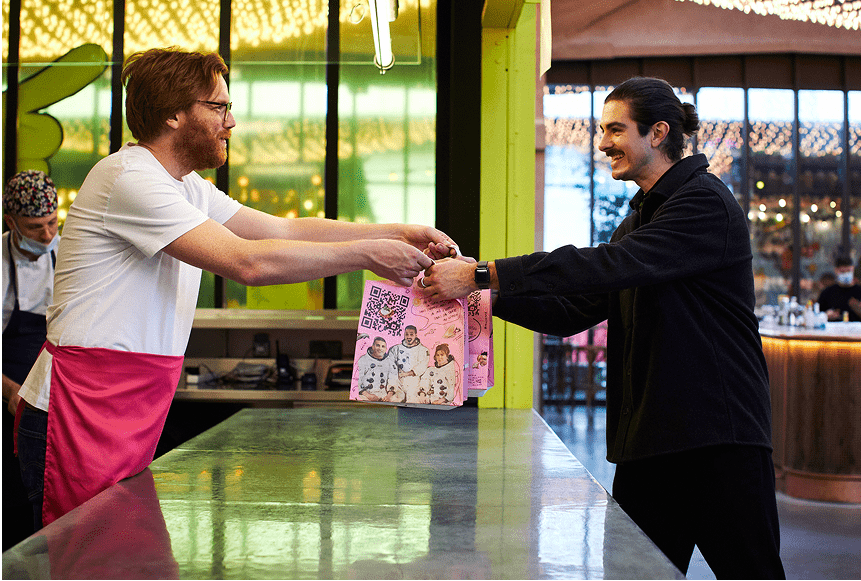
How a Modern Pay-at-Table System Boosts Your Restaurant’s Efficiency
The Growing Need for Quick and Seamless Payments
Picture this scenario: It’s a busy Saturday evening, your dining room is elegantly set, and every table is fully booked. Yet, there’s a bottleneck—long queues of guests waiting to settle their bill at your payment terminal. Servers are juggling multiple tasks, including processing payments for each table, and your valued customers start checking their watches. This frustrating moment is precisely why more restaurants are adopting pay-at-table technology. In French, we refer to this concept as “paiement à table,” and it drastically reduces the waiting time between finishing a meal and settling the bill.
In the UK hospitality scene, paying the bill quickly and securely has always been a crucial component of customer satisfaction. As dining experiences evolve, so do expectations for speed, safety, and convenience. With a pay-at-table solution, votre équipe (your team) can hand over control to the customer without losing oversight. By leveraging a simple QR code that guests scan with their mobile device, they can complete their payment, tip as they prefer, and even leave a quick review if they wish—without waiting for a server to bring the card reader over. According to a BigHospitality report, many UK restaurants accelerated digital payment adoption in recent years to enhance guest satisfaction and staff productivity.
As a restaurant owner or manager, you know that each detail—however minor—impacts the bigger picture. When payments are more efficient, tables turn faster, guests talk more positively about their experience, and the staff can focus on providing warm, memorable service rather than queuing at a stationary cash register or dashing around with a payment terminal. In short, pay-at-table technology is transforming the dining experience in ways that benefit both guests and staff alike.
Why Table Turnover Matters More Than Ever
Table turnover—or table rotation—is more than just a buzzword in the industry. It’s a major indicator of how effectively you’re managing your dining space. The concept is simple: The faster your tables turn over, the more services you can provide throughout the day. Of course, speeding up the process must never compromise the customer experience. This is where pay-at-table tools excel. Instead of having your staff run back and forth with payment machines, receipts, or card solutions, the process is completed where the guests are seated.
Think of it like a perfectly orchestrated brigade in the kitchen: each chef knows their role, timing is impeccable, and dishes are served at their peak. Similarly, a pay-at-table solution keeps your front-of-house running like a well-oiled machine. By eliminating waits at the counter or the back-and-forth shuffle of a payment apparatus, you’re ensuring guests can settle up at precisely the moment that suits them, freeing their table for your next eager customers.
According to data referenced by the National Restaurant Association, quick and efficient table turnover can boost revenue, especially in peak hours, by allowing you to accommodate more diners in the same time frame. When you combine this with an excellent menu and stellar service, you’ll have both increased profits and happier customers. The earlier you adopt table-side payments, the sooner you’ll see the cumulative benefits across your business.
Improving Guest Flow and Reducing Crowding
In busy periods—weekend brunches, festive celebrations, or a high-traffic after-work rush—front-of-house staff often face bottlenecks when customers queue to pay. Lines at the payment counter don’t just frustrate guests; they can disrupt your restaurant’s overall flow. Crowding near the exit or bar can deter new arrivals and even create an impression that your establishment is chaotic.
By implementing a pay-at-table platform, diners can pay, secure their guests’ share of the bill, and leave without adding to a physical queue. It’s not unlike a well-managed reservations system. You aim to keep the experience smooth, from the moment customers book a table to the moment they exit. With fewer clusters of waiting customers, your staff has more time to assist seated guests, answer questions, and potentially upsell desserts or coffee.
In conversations with owners who have already integrated a QR-code payment method, one recurring theme is how the dynamics at the exit have changed. Gone are the grumbles of “Excuse me, can we just pay?” or an apologetic “Sorry to keep you waiting!” from your servers. Instead, customers take control of this last stage of their dining experience, and your staff can focus on the next group of arriving diners. Your restaurant flows smoothly, as if each guest visit were choreographed from start to finish.
Accelerating Service Without Rushing the Customer
Some owners worry that by introducing a faster way to pay, they might inadvertently rush their guests. The reality is quite the opposite. With a pay-at-table solution, diners actually have more freedom to pay at their own pace. Contrary to the hurried feeling guests might get when a server looms with a card machine, a QR code gently invites users to settle up when they’re ready.
When customers have the autonomy to pay discreetly, they feel more at ease ordering another round of drinks or dessert—knowing they won’t have to hunt down staff with the bill. This fosters a more relaxed atmosphere, where the pace of the meal is dictated by the guest, not by staff availability or the friction of a manual payment protocol.
For restaurants, this subtle shift can enhance the overall satisfaction levels. Diners don’t feel ushered out, and your servers can dedicate their time to delivering excellent service elsewhere. If you worry about losing personal contact, keep this in mind: pay-at-table doesn’t replace the human touch, it only complements it by removing an unnecessary waiting period.
Key Benefits for Your Restaurant
Pay-at-table solutions bring a range of benefits beyond the initial promise of improved turnover. Let’s break down some of the most compelling advantages:
- Higher Tip Potential: When guests pay at their own pace, they’re more likely to stick with recommended tip percentages rather than rushing through. Some systems even give gentle suggestions, nudging guests toward a fair or generous tip.
- Boosted Staff Efficiency: Freeing up servers from payment tasks allows them to focus on delivering attentive and quality service. They have more time to chat with guests, offer recommendations, and ensure a personalised experience.
- Error Reduction: Human error in transcribing orders can happen, but with the right integrated system, the bill displayed on the customer’s phone is accurate. This clarity reduces disputes and fosters trust.
- Encouraged Feedback: Some pay-at-table platforms make it easy for guests to leave a quick review on Google. This immediate prompt can increase the volume of positive feedback and help you climb search rankings for local diners.
- Increased Turnover: By cutting out downtime between meals and payment, you can seat new parties sooner, increasing your daily capacity and thus your revenue.
These benefits combine to enhance your restaurant’s overall reputation. The day-to-day result is a reduction in headaches for both staff and patrons. Meanwhile, a more satisfied customer base sets the stage for repeat visits, word-of-mouth recommendations, and an expanded presence in your local food scene.
A Quick Case Study: The Impact of Table-Side Payments
Let’s imagine an independent French bistro in the heart of London—call it La Belle Gourmande. On a typical Friday night, the dining room is bustling. The owner, who introduced pay-at-table solutions from a platform akin to sunday, notices immediate changes:
- Servers spend less time running back and forth collecting payments. Instead, they use those valuable minutes doing table touch-bases, upselling wine, or overseeing quality.
- Guests scan a small QR code placed at the centre of the table to pay. The bistro sees fewer lines forming near the POS terminal and an uptick in positive reviews mentioning “quick and easy checkout.”
- Because customers settle promptly, La Belle Gourmande can accommodate extra walk-ins later in the evening by offering them tables that open up faster than before.
- Staff members express relief, as the busiest part of the shift no longer involves dashing across the floor with receipts, dealing with signature slips, or troubleshooting card machine errors.
Within weeks, the restaurant’s management sees meaningful differences in their turnover rate, staff morale, and customer feedback. This kind of anecdote is becoming more common as the UK’s hospitality venues adapt to the digital era. By removing friction at the final stage of a meal, pay-at-table tech extends an already positive experience through to the end of the customer journey.
How Security and Trust are Maintained
One question that often arises is: “Is this method secure?” As with any digital technology handling payments, security is paramount. Well-established pay-at-table solutions use encrypted pathways, tokenisation, and compliance with Payment Card Industry (PCI) standards. This can be more secure than handing your card over to a server—no matter how trustworthy they may be—and then waiting to see how the transaction is processed.
Additionally, guests see the exact amount they’re being charged, tip options, and any promotions in real time on their own screen. This transparency fosters trust, as there’s no ambiguity about hidden fees or gratuities. From the owner’s perspective, advanced analytics can also provide real-time insights into sales, average spend, and busy periods, allowing you to adjust staffing and table management accordingly.
Pay-at-table technology, therefore, serves as a modern safeguard as much as a convenience tool. By reassuring guests about the methods you use, you’re building a rapport that can convert one-time customers into loyal regulars.
Overcoming Potential Staff Resistance
Some restaurant owners worry that their team might resist the switch to a significantly digital payment system. It’s understandable—servers might fear losing tips or losing the chance to engage personally with guests during the bill payment. However, feedback from those who have already adopted these solutions paints a different picture.
When staff see fewer arguments about bill-splitting or confusion over receipts, they appreciate how the technology lightens their workload. They also observe that tip suggestions encourage generous gratuities, and the improved table turnover can lead to busier shifts. Once employees understand that pay-at-table solutions free them to provide more meaningful service rather than repetitive tasks, most view the technology as an upgrade.
The key is open communication. Introduce the system with proper training, emphasise the user-friendly benefits, and clarify that this is not about replacing personal interactions but rather removing friction and inefficiencies that neither staff nor guests enjoy.
Practical Implementation Tips
Implementing a new payment method requires proactive planning. Below are some tips to consider when setting up pay-at-table in your establishment:
- Choose the Right Platform: Opt for a user-friendly solution that integrates seamlessly with your existing point-of-sale system. This ensures that orders, updates, and bills remain synchronised.
- Train Your Team Thoroughly: Walk your servers through the new process, let them test it out with dummy transactions, and encourage them to ask questions.
- Position the QR Codes Intuitively: Make sure the code is visible on the table—neither too hidden nor too intrusive. If you’re also using table tents or signage, keep the design neat and professional.
- Encourage Feedback: In the early days, encourage your staff and guests to share their experiences. Work on any issues swiftly, whether it’s scanning difficulties or unclear instructions.
- Promote Safety and Hygiene: Pay-at-table methods reduce contact points. Emphasise this in your communications, especially if health and safety remain a prime concern for your customers.
Setting the Table for More Growth and Satisfaction
Pay-at-table isn’t just another gadget in your hospitality toolkit. It’s a response to a market demanding convenience, speed, and transparency. It’s also an investment that can pay dividends in guest satisfaction, staff morale, and bottom-line revenue. By reducing wait times, streamlining operations, and offering a smooth, friendly checkout experience, you create an environment where diners feel both relaxed and respected.
Brands like sunday have led the charge by combining the practicality of digital transactions with an intuitive, guest-centred approach. Their solution integrates tipping, encourages Google reviews, and ensures that every final interaction with your restaurant leaves a positive impression. And while the dining sector continues to evolve at record speed, certain truths remain constant: hospitality thrives on efficiency, positive human connection, and making customers feel valued from start to finish.
Bringing pay-at-table technology into your establishment is akin to serving a perfectly balanced dish: the ingredients of convenience, security, and speed blend together to leave a lasting impression on your diners. In a fast-changing world, you, as a restaurant owner, want every advantage that keeps your tables booked and your customers happy. And that’s exactly what modern pay-at-table solutions deliver—no fuss, just exceptional service from the moment guests sit down to when they quietly, but happily, tap a button and say, “We’ll definitely be back.”
Find out more today
Drop us your details below and we’ll reach out within the next 24
“Bill please” is a thing of the past.
With our integrated QR codes your customers pay in seconds, straight from their table.




